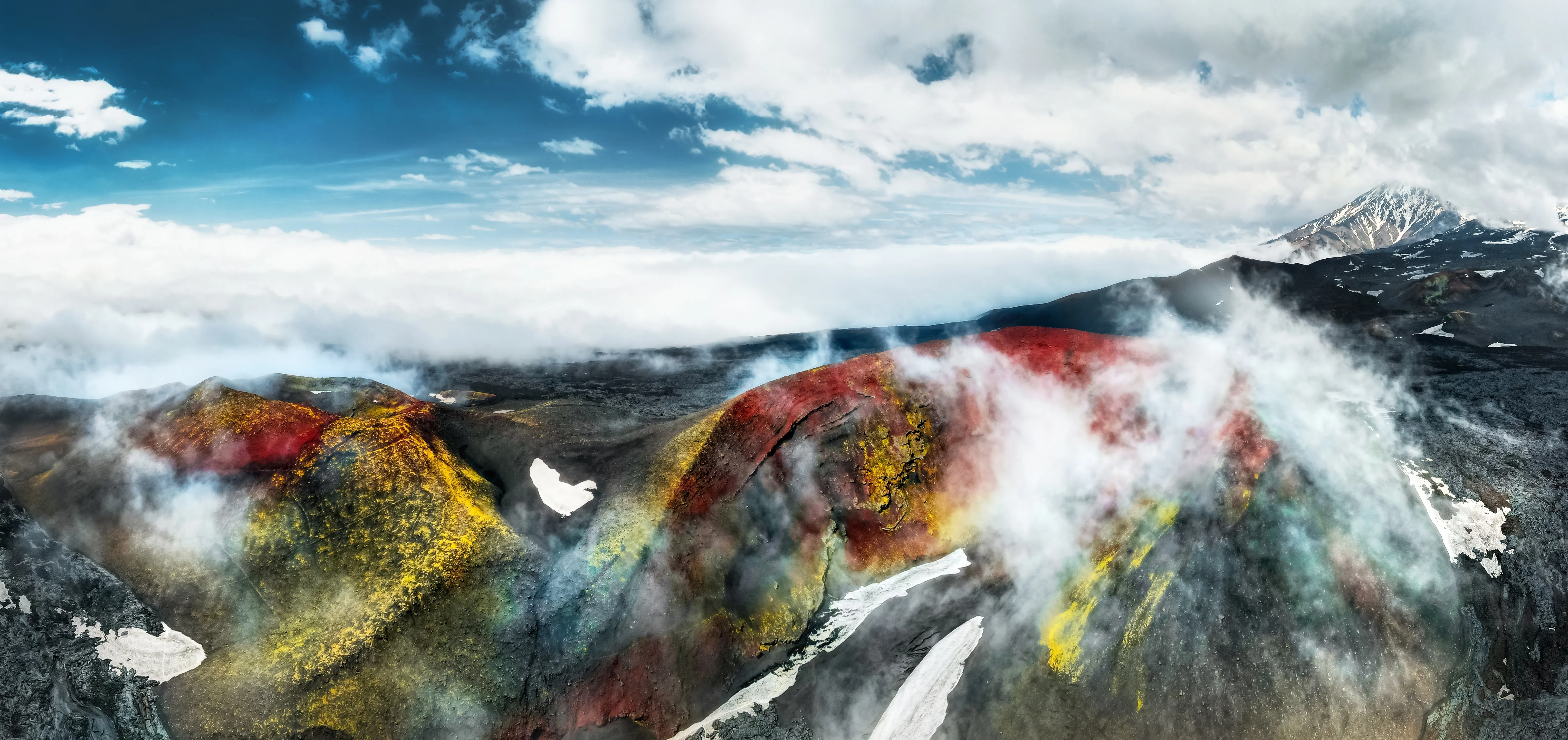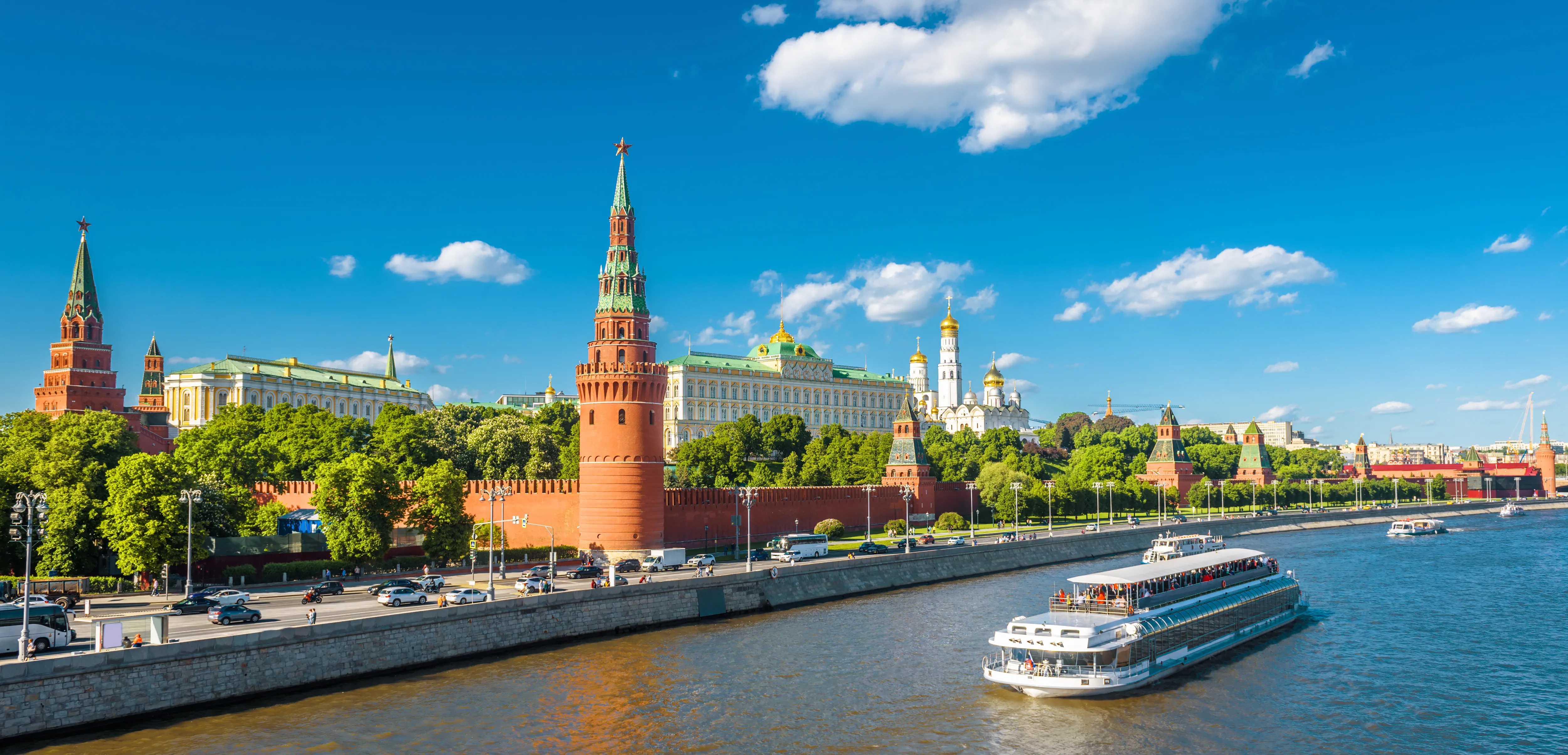Day 1. Murmansk: Sightseeing Tour
The journey begins in the largest city beyond the Arctic Circle. Murmansk was founded primarily as an ice-free port needed by the Russian Empire during World War I. Murmansk lies on one of the most promising trade routes in the world — the Northern Sea Route. It allows goods to be delivered from China to Europe two weeks faster than through the Suez Canal.
Monument to the Defenders of the Soviet Arctic
Locals call it by the Russian name “Alyosha.” This grand memorial stands as if on guard, shielding the city from possible attack with its back. The memorial is dedicated to all the soldiers who defended the Soviet Arctic during the Great Patriotic War.
Address: 68.992483, 33.073188
“The Waiting Woman” Monument
This monument is dedicated to a woman awaiting the return of a sailor. From here, you can also see Kola Bay from the height of Zelyonaya Hill and from the observation deck.
Address: 68.999795, 33.064348
Cod Monument
A local symbol of the fishing industry. The monument is located in the central square at Five Corners Square.
Address: 68.969431, 33.078180
Lenin Nuclear-Powered Icebreaker Museum
Visiting this site will be the highlight of the day. The Lenin icebreaker was the world’s first surface vessel with a nuclear power plant. It was launched in 1957. After 30 years of faithful service, the icebreaker was retired and permanently moored in Murmansk. A walk along its decks, engine room, and captain’s bridge will transport you back to the time when the world’s most powerful nuclear fleet was born. Note — you must book the tour in advance and confirm ticket availability. Opening hours: Wednesday to Sunday at 10:30 AM, 12:00 PM, 1:30 PM, 3:00 PM, and 4:30 PM
Address: Floating Pier of the Lenin Icebreaker, 25 Portovy Passage
Day 2. Teriberka Village
Next, the route leads to the old fishing village of Teriberka, founded in the 16th century. At various times, it was home to a weather station, a steam-powered lighthouse, a fishing telegraph, and a water rescue station. Later, fishing collectives and agriculture actively developed in Teriberka. In 2014, a famous Russian director filmed “Leviathan” here, which was nominated for an Oscar.
Teriberka Nature Park
The park preserves 35 species of plants, lichens, fungi, and animals listed in the Red Books of Russia and the Murmansk Region. Among the rose root and the lichen Lichenomphalia hudsoniana live the snowy owl, peregrine falcon, and horned lark. In summer, you can walk along eco-trails, watch the tides, and, if lucky, spot whales and seals. In winter, you can “hunt” for the Northern Lights, ride snowmobiles or skis, try snowkiting, go ice fishing, or take a trip in a husky or reindeer sled. Entry to the park is paid, and a special permit is required. It is also important to review the park’s visiting rules.
Address: 69.167987, 35.099637
Website: oopt-murman.ru/park/?ID=103
Coast of the Arctic Ocean
In Teriberka, you can drive by car to the shore of the Arctic Ocean. Upon arrival, start exploring the area with the ship graveyard, framed by the harsh yet alluring landscapes of Teriberka that inspire reflections on the eternal. Here you will see the remains of decommissioned fishing and transport vessels that have served their time. A majestic and truly unique sight!
Address: 69.169210, 35.122185
Stone Beach “Dragon Eggs”
After that, walk to the beach with “dragon eggs” — huge stones that have been rounded by the waves and wind.
Address: 69.204626, 35.089986
Teriberka Waterfall
Next, visit the unique Teriberka Waterfall, which pours the waters of Lake Maloye Batareyskoye into the Barents Sea.
Address: 69.203222, 35.059082
Day 3. Kirovsk
The third day of your journey will be spent in the mountains of Kirovsk — a popular destination for skiing holidays. The resorts here boast one of the longest seasons in Russia — from November to May. The city is also notable as the birthplace of the local mining industry.
Polar-Alpine Botanical Garden-Institute of the KSC RAS named after Avrorin
Here you will discover the unique plants of the Khibiny Mountains. One of the most popular routes is the eco-trail of Mount Vudjavrchorr, which runs from the bank of the Vudjavryokk River to an observation deck with a view of the mountain range. The territory of the garden-institute is a specially protected natural area. You can only walk through it as part of a guided tour. To enter the protected area, you must first obtain a permit. There is also a greenhouse on the grounds, featuring a collection of tropical and subtropical plants — palms, cacti, and ficuses. Both general tours and special programs are offered — “In the Footsteps of Robinson,” “New Year’s Plants of the World,” and “Kitchen Plants.” You will also see a herbarium that has been collected since 1939. It is one of the largest herbaria in Russia, with about 150,000 specimens of vascular plants, lichens, bryophytes, cyanoprokaryotes, and the largest collection of liverworts in the country. You must book your tour in advance on the website. Opening hours: Tuesday, Thursday, Saturday: 10:00 AM – 4:30 PM Wednesday, Friday: 1:00 PM – 7:00 PM Sunday: 11:00 AM – 4:30 PM
Address: Botanical Station Quarter, Kirovsk, Murmansk Region
Museum and Exhibition Center “Apatit”
It is connected to the city’s main industrial enterprise. At the museum and exhibition center, you will learn the history of the exploration of the Khibiny, examine valuable mineral rocks up close and under a microscope. You will also see moving models of various types of mining work carried out daily in the mountain range. Opening hours: Daily 10:00 AM – 9:00 PM, last entry at 8:00 PM
Address: 4a Lenina Prospect, Kirovsk
Art Park “Mysterious Forest”
Numerous art locations set in the natural mountain landscape. Here you can observe forest inhabitants, “meet” a paleo-lizard, mammoth, and T-Rex, visit the Alchemist’s Tower and the Fisherman’s Hut. Take a botanical tour along the park’s eco-trail or a local history tour along the “Platovsky Waterfall” trail. Ride SUP boards, join a quest, take part in a workshop, attend a concert, or watch fire performances. Opening hours: December–April: Monday–Thursday, Sunday: 3:00 PM – 10:00 PM, Friday–Saturday: 3:00 PM – 11:00 PM July–September: Monday–Thursday, Sunday: 3:00 PM – 10:00 PM, Friday–Saturday: 3:00 PM – 11:00 PM
Address: 67.575976, 33.717689
Quad Bike Trip
Take the 25-kilometer “Introduction to the Khibiny” tour. The route along the shore of Lake Malyy Vudyavr passes the site of the first scientific station on the Kola Peninsula — “Tietta” in the 1930s — which played an important role in the industrial and scientific development of the Khibiny. Then you will drive through the Poachyok Stream valley at the foot of Mount Poachvumchorr and climb the Kukisvumchorr Pass, offering spectacular views.
Day 4. Kandalaksha
From Kirovsk, head straight to the White Sea. The White Sea has always attracted fishermen and sailors with its riches, and those who eventually settled on its shores became known as Pomors. Their cultural traditions were shaped by the harsh northern climate and their main occupations — fishing, hunting, and seafaring. Here, on the islands of the White Sea, the world’s first marine nature reserve was established, and its museum is a must-visit during your trip.
Ecological Trail “Kandalaksha Coast”
An excellent way to discover the local nature. The eco-trail runs 3.5 km from the historical part of the city “Monastyrsky Navolok” to the ancient stone structure “Babylon” — a “dead-end” labyrinth dating back to the 2nd millennium BC. This is one of three surviving ancient labyrinths on the Kola Peninsula. Researchers believe there may once have been as many as 50 — some lost forever, others yet to be found. Along the way, you might spot local wildlife — flocks of eiders or ringed seals.
Address: 67.129167, 32.430000
Day 5. Arctic Circle and Umba
Upon leaving Kandalaksha, you will cross the Arctic Circle — the 66th parallel.
Umba Village
Arriving in the old Pomor village of Umba, you will find yourself in a completely different, unhurried way of life — modest wooden architecture, fishing traditions, and Pomor folklore. The village was once under the ownership of the Solovetsky Monastery, which in 1765 founded here the Church of the Resurrection of Christ. At the same time, the locals — the Pomors — believed in nature spirits such as the water spirit, leshachikha, and other mythical beings. They performed rituals connected to the sea, fishing, hunting, and agriculture. They also observed a number of taboos on actions that could desecrate the water, such as never throwing trash into bodies of water. Their lifestyle was characterized by equality, independence, and mutual respect among all family members. Women played a crucial role in the family, especially in the absence of men engaged in fishing and hunting.
Address: 66.684763, 34.344183
Kanozero Petroglyph Museum-Reserve
Learn the history of studying mysterious rock carvings. Petroglyphs are images carved or painted on stone from the Paleolithic through the Middle Ages. The local petroglyphs were discovered quite recently, in 1997. Subsequent expeditions uncovered a total of 1,000 images of humans, fish, and animals — on the islands of Bolshoy Podmunskiy, Maly Padunskiy, Skalisty, and the coastal cliff Odinokaya. They were left by tribes of marine hunters who lived in the Neolithic, or New Stone Age. Opening hours: Winter season (September 15 – June 14): Monday–Friday: 10:00 AM – 5:00 PM Saturday: 10:00 AM – 4:00 PM Sunday: Closed Summer season (June 5 – September 14): Monday–Friday: 10:00 AM – 6:00 PM Saturday–Sunday: 10:00 AM – 4:00 PM
Address: 36 Dzerzhinskogo Street, Umba
History Museum
Here you will learn about the history of the Tersky land in ancient times. The museum’s collection includes household items and tools, especially those used in fishing and seal hunting by the Pomors. The interior of a traditional log house has been recreated, filled with original kitchen utensils, hand embroidery and lace, tools for work and hunting. You will see a 19th-century Sami-Russian dictionary, kalgi skis, a poezdnitsa boat, traditional Pomor clothing, children’s toys called babushki, sherkunki (rattles), and panya dolls. The temporary exhibition hall regularly hosts various displays of arts and crafts by masters and artists of the Murmansk Region. Opening hours: Wednesday to Sunday 10:00 AM – 6:00 PM
Address: 78 Dzerzhinskogo Street, Umba
Day 6. Monchegorsk
The last day of the trip will be spent in Monchegorsk — the city of metallurgists. It is surrounded by numerous lakes, near the enchanting Lapland Nature Reserve, created to protect the reindeer. The city is a center for the production of both non-ferrous metals — nickel, copper, cobalt — and precious metals — gold, silver, platinum, palladium. You can see all of this at the local mineralogical museum.
Monchegorsk History Museum
The museum is located in a beautiful building reminiscent of a terem. Despite its old-style design, the interior is equipped with modern multimedia facilities, allowing lectures and educational programs to be held in an interactive format. The museum offers a variety of themed exhibitions — “Protected Lapland,” “The City in the Beautiful Tundra”, “Monchegorsk: The War Period”, “The City at the Turn of the Century”. Opening hours: Tuesday to Friday: 10:00 AM – 6:00 PM, Saturday to Sunday: 11:00 AM – 6:00 PM
Address: 2 Tsarevskogo Street, Monchegorsk
Website: mig.org.ru
Sightseeing Tour of Monchegorsk
Walk along Rechnaya, Morskaya, and Leningradskaya embankments. See one of the city’s famous art objects — the symbol of the embankment, “The Dreamer” — an openwork sculpture through which there is a stunning view of the lake and mountains. One of the best spots for photos!

